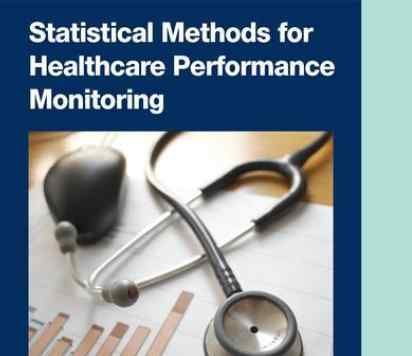Start and end dates
April 2014 to March 2019
Team
- Anthony Thomas
- Hannah Lishman
- Myriam Gharbi
- Paul Aylin
- Sabine Bou-Antoun (PhD student)
- Ceire Costelloe
- Alan Johnson (PHE)
Project summary
Background
A small team from the NIHR Health Protection Research Unit in Healthcare-Associated Infections and Antimicrobial Resistance is hosted within the Department of Primary Care and Public Health and has been granted funding to create both an operational database within Imperial College Healthcare NHS Trust and a research database to try and link disparate sources of data pertaining to infections of interest acquired in the community or in the healthcare setting. The surveillance team works under the direction of Professor Paul Aylin and is part of a wider programme of work within the NIHR Health Protection Research Unit involving colleagues from Imperial College, Imperial College Healthcare Trust and Public Health England.
This programme of work investigates information sources available and examines how data can be best used in infectious disease surveillance and risk modelling to inform practice and help guide patient management. It explores issues around patient confidentiality, data linkage, validation and uses internal databases and other sources such as primary care data, Hospital Episode Statistics and mortality data, and will result in a number of operational tools for surveillance and management of infections acquired within in the community and in hospital.
Healthcare Associated Infections research
The team works under the guidance of the director of the HPRU, Professor Alison Holmes, as well as other infection control staff within Imperial College Healthcare NHS Trust and researchers at Public Health England. This collaboration provides unique access to laboratory diagnoses, national surveillance datasets for antimicrobial resistant infections and the opportunity to compare HES data with systems of notification.
Aims
- Evaluate systems to monitor antibiotic resistance and prescribing practice across primary and acute care
- Build predictive models to help manage patients at a higher risk of developing certain infections (drug-resistant or otherwise)
- Develop ways to extend the range, quality and sophistication of current data on infection and risk in the NHS to prevent and manage infection
- Establish measurable predictors of admission and readmission for infections based on routinely collected data
- Develop surveillance in high-risk populations and across primary and secondary care, including post-discharge
Outputs
Peer-reviewed publications
- Gharbi M, Doerholt K, Vergnano S, Bielicki J, Paulus S, Menson E, Riordan A, Lyall H, Patel S, Bernatoniene J, Versporten A, Heginbothom M, Goossens H, Sharland M et al., Using a simple Point-Prevalence Survey to define appropriate antibiotic prescribing in hospitalised children across the United Kingdom, BMJ Open, ISSN: 2044-6055 Publisher's link.
- Gharbi M, Moore LSP, Castro-Sanchez E, Spanoudaki E, Grady C, Holmes AH, Drumright LN et al., 2016, A needs assessment study for optimising prescribing practice in secondary care junior doctors: the Antibiotic Prescribing Education among Doctors (APED), BMC INFECTIOUS DISEASES, Vol: 16, ISSN: 1471-2334 Publisher's link.
- Gharbi M, Moore LSP, Gilchrist M, Thomas CP, Bamford K, Brannigan ET, Holmes AH et al., 2015, Forecasting carbapenem resistance from antimicrobial consumption surveillance: Lessons learnt from an OXA-48-producing Klebsiella pneumoniae outbreak in a West London renal unit, INTERNATIONAL JOURNAL OF ANTIMICROBIAL AGENTS, Vol: 46, Pages: 150-156, ISSN: 0924-8579 Publisher's link.
- Venanzio V, Gharbi M, Moore LSP, et al., 2015, Screening suspected cases for carbapenemase-producing Enterobacteriaceae, inclusion criteria and demand, Journal of Infection, Vol:71, ISSN:0163-4453, Pages:493-495 Publisher's link.
- Charani E, Gharbi M, Frost G, Drumright L, Holmes A. Antimicrobial therapy in obesity: a multicentre cross-sectional study, J Antimicrob Chemother. 2015 ;70(10):2906-12. Publisher's link.
- Moore LS, Freeman R, Gilchrist MJ, Gharbi M, Brannigan ET, Donaldson H, Livermore DM, Holmes AH. Homogeneity of antimicrobial policy, yet heterogeneity of antimicrobial resistance: antimicrobial non-susceptibility among 108,717 clinical isolates from primary, secondary and tertiary care patients in London. J Antimicrob Chemother. 2014;69(12):3409-22 Publisher's link.
Conference posters
- FIS / HIS 2016 Conference Edinburgh: Using a simple Point-Prevalence Survey to define appropriate antibiotic prescribing in hospitalised children across the United Kingdom Gharbi M, Doerholt K, Vergnano S, et al.
-
GRIN 2016 Conference Oxford: Investigating the effect of suboptimal antibiotic prescribing for UTIs in primary care on hospital admissions due to bloodstream infections. Lishman H, Gharbi M, Costelloe C, et al.
Expected outcomes
- Urinary tract infections in the elderly – care pathways and characteristics (2 publications): Gharbi M, Lishman H, Goudie R, Molokhia M, Johnson A, Holmes A, Aylin P
- Exploring the relationship between primary care antibiotic prescribing for urinary tract infections, E. coli bacteraemia incidence and antimicrobial resistance: an ecological study. Lishman H, Costelloe C, Hopkins S, Johnson AP, Hope R, Guy R, Muller-Pebody B, Holmes A, Aylin P (submitted)
- Investigating the effect of suboptimal antibiotic prescribing for UTIs and CA-pneumonia in primary care on hospital admissions due to bloodstream infections (2-3 publications): Lishman H, Gharbi M, Costelloe C, Molokhia M, Johnson AP, Aylin P
- Measuring the potential unintended consequences following a change in antibiotic prescribing in primary care (2-3 publications). Bou-Antoun S, Costelloe C, Gharbi M, Balinskaite V, Hayhoe B, Johnson AP, Aylin P
Privacy notice
The Dr Foster Unit at Imperial College London uses your health information for a number of purposes. The Dr Foster Unit GDPR Privacy Notice (PDF) provides a summary of how we use your information.
